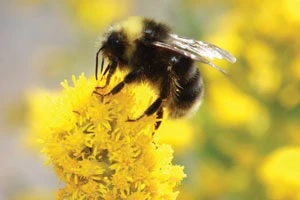
The Oregon Department of Agriculture has banned the use of neonicotinoid insecticides on the Tilia genus of trees.
The rule prohibits the application of the four neonicotinoid insecticides, dinotefuran, imidacloprid, thiamethoxam and clothianidin, regardless of application method, on all trees in the Tilia genus, which includes linden and basswood trees. The ODA signed the final rule, OAR 603-057-0388, on Feb. 27.
There are several possible consequences for Oregon growers that continue to use products with these active ingredients. Failure to comply with the rule may result in revocation, suspension, or refusal to issue or renew the license or certification of an applicant, licensee or certificate holder, imposition of a civil penalty, or any other enforcement authorized under any law.
According to AmericanHort’s Bee and Pollinator Stewardship Initiative, neonicotinoid insecticides are used to defend trees, shrubs and plants against destructive invasive species like the Japanese beetle, hemlock woolly adelgid, emerald ash borer and Asian longhorned beetle. In some cases, neonicotinoids are approved regulatory treatments for certification and interstate movement of nursery and greenhouse crops. In others, they are used to manage the development of pesticide resistance to other treatment options.
The pesticides came under fire after a June 2013 incident in which they were blamed for the death of 50,000 bees in Wilsonville, Ore. A landscaping company applied a neonicotinoid insecticide including the active ingredient dinotefuran on dozens of blooming Linden trees, a violation of label directions. The event ignited a national debate on the relationship between pesticides and pollinator health. The ODA enacted a temporary rule restricting the use of pesticides containing the active ingredients imidacloprid and dinotefuran. The investigation was completed and the restriction was lifted in December 2013. In 2014, the ODA imposed label language prohibiting the use of products containing those same two ingredients for use on trees in the Tilia genus.
The Oregon Association of Nurseries supported the temporary measure instituted by the ODA to ban the use of imidacloprid and dinotefuran on linden trees and believes that the extension of the limitations of the two active ingredients is appropriate. But according to Jeff Stone, executive director of OAN, it was a surprise to many who have worked in good faith with the ODA that those two additional ingredients, thiamethoxam and clothianidin, were added to the rule.
“We feel that the ODA action is not consistent with how neonicotinoids are registered through the U.S. EPA’s Reduced Risk Pesticide program and would urge the department to rescind the restriction on thiamethoxam and clothianidin until further conversations can be scheduled between the various interest groups who support pollinator health,” Stone said. “We are disappointed in the decision by the ODA but the association is committed to work with state and national interests to work with elected officials and agencies to resolve the pressing problems with pollinators.”
The ODA isn’t the only organization to take steps against neonicotinoids. The Home Depot is requiring all plants that have been treated with neonicotinoids to bear a special tag informing customers that the plant has been exposed to that specific type of insecticide.
The retailer is concerned about the effect that neonicotinoid insecticides could be having on pollinator populations. Nursery Management covered the topic in our January issue.
Not everyone agrees about the best course of action. Bayer CropScience North America said in a statement that plant protection products, including neonicotinoids, are extensively reviewed by the EPA to make sure they are safe for humans and the environment before they reach the market. More than 100 studies have concluded that when used according to label instructions, neonicotinoids are not harmful to bee colonies.
A report issued in May 2013 by the United States Department of Agriculture (USDA) and the EPA said honeybee health is being impacted by a wide range of factors including lack of forage, disease and parasites. The USDA identified the Varroa mite as the most important factor related to honey bee colony decline. If neonics were the mystery killer, then not using them should translate into healthier bees; but that’s not what has happened, according to the report.
Prior to ODA’s action last week, the OAN conducted extensive outreach to retail, greenhouse and field-grown members to increase awareness of the pollinator issue as well as assess the use of the chemical class and the number of licensed pesticide applicators.
“Beyond the dramatic headlines, the nursery industry expressed its support of the ODA action and the industry’s reservations regarding an outright ban of neonicotinoids,” Stone said. “This chemical class is relatively safe to both humans and pollinators and is used as part of pest mitigation by our greenhouse and nursery members.”
Latest from Nursery Management
- A letter from the sponsor: Janna Beckerman, Envu
- John Ruter shares UGA's latest woody and herbaceous ornamental plant breeding projects
- Voting now open for National Garden Bureau's 2026 Green Thumb Award Winners
- Conor Foy joins EHR's national sales team
- Pantone announces its 2026 Color of the Year
- Syngenta granted federal registration for Trefinti nematicide/fungicide in ornamental market
- Get to know Kayela Aeppli
- HILA 2025 video highlights: John Gaydos of Proven Winners





